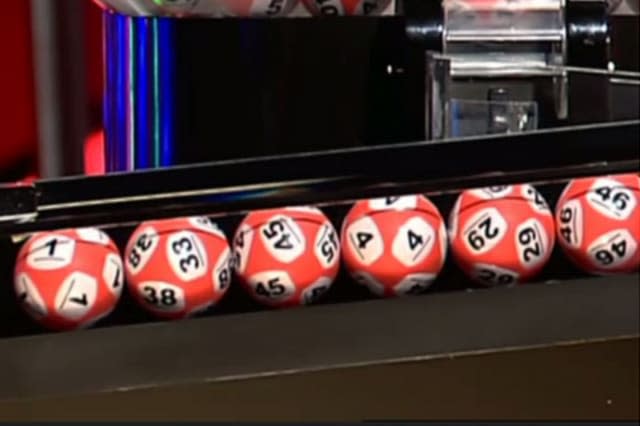Irish lottery players claim ball had two numbers

Irish lottery players are up in arms, claiming that one of the balls in Saturday's £4.5 million draw had two different numbers on it - but the organisers say it was just a trick of the light.
Punters watching the live Lotto Plus 1 draw on RTE say that one of the winning balls - 38 - also had the number 33. And more than one posted a photo on social media, questioning whether the draw was a fix.
See also: National Lottery publishes wrong winning numbers
See also: Man wins half a million on the Lottery - but is told it's a mistake
"Fixed Irish lotto, look at 33 & 38 on the same ball?" wrote one. Another commented: "Clear as day a total fix". Some viewers suggested that the lottery should pay out on both 33 and 38.
The National Lottery, though, insists that there was only one number on the ball.
"The National Lottery would like to assure its players of the integrity of Saturday night's Lotto Plus 1 draw," it says in a statement.
"A brief reflection of light during filming caused an illusion and some players to think there were two numbers on ball 38. This was not the case."
To make sure everything's above board, it says, the weight and size of all Lotto balls - and the numbers - are strictly checked in advance of each draw.
"This process, as well as the draw itself, is independently observed by our auditors KPMG," it adds.
The ball in question was the second to be drawn, along with numbers 1, 4, 29, 45, 46 and the bonus ball, 26. But as it rolls along the tube after having been picked, it undeniably appears to have the number 33 on one side.
The illusion appears to have been caused by light shining on one side and creating a small area of glare; and a similar effect is, in fact, visible on the next number to have been drawn, ball number 45.
It's not the first time that lottery organisers have been accused of a fix. Two years ago, the head of Serbia's national lottery resigned, after the number of one of the winning balls was apparently displayed as an on-screen graphic - before it had even been drawn.
The explanation was a simple mistake. First, the number 27 was drawn - but wrongly entered as 21. The next ball to be drawn actually was 21.
There has, though, been at least one example of genuine lottery-rigging. Iowa lottery head of information security Eddie Tipton exploited his position to pre-program the lottery computer to pick certain numbers - but was caught and given ten years in jail.




